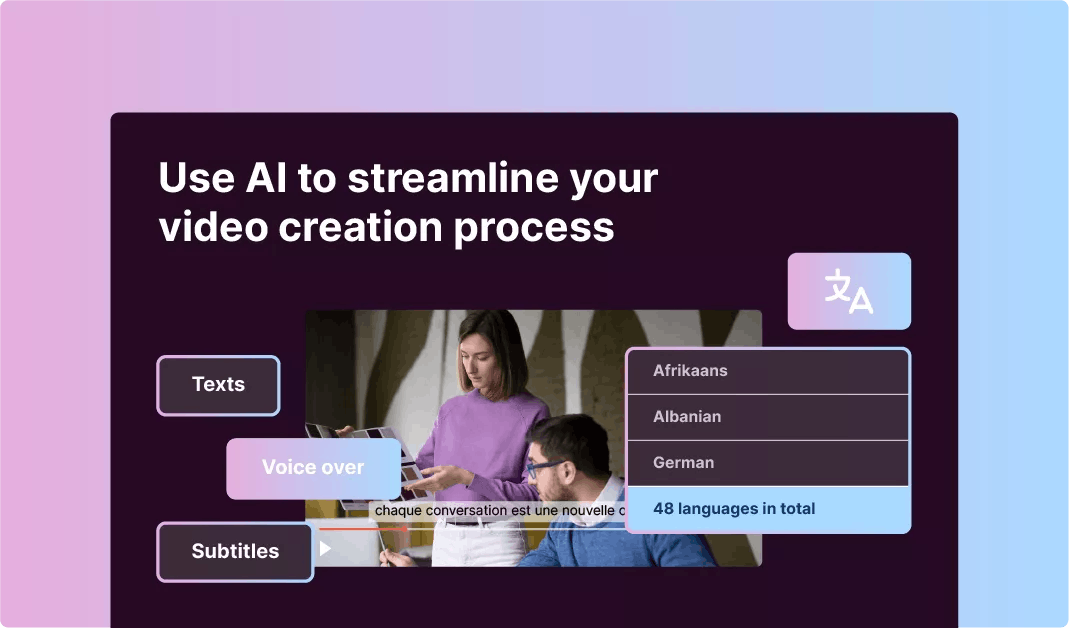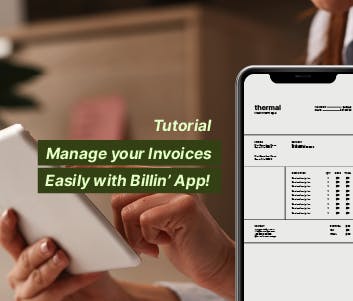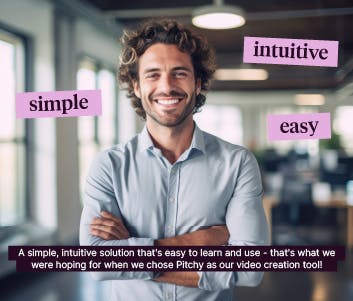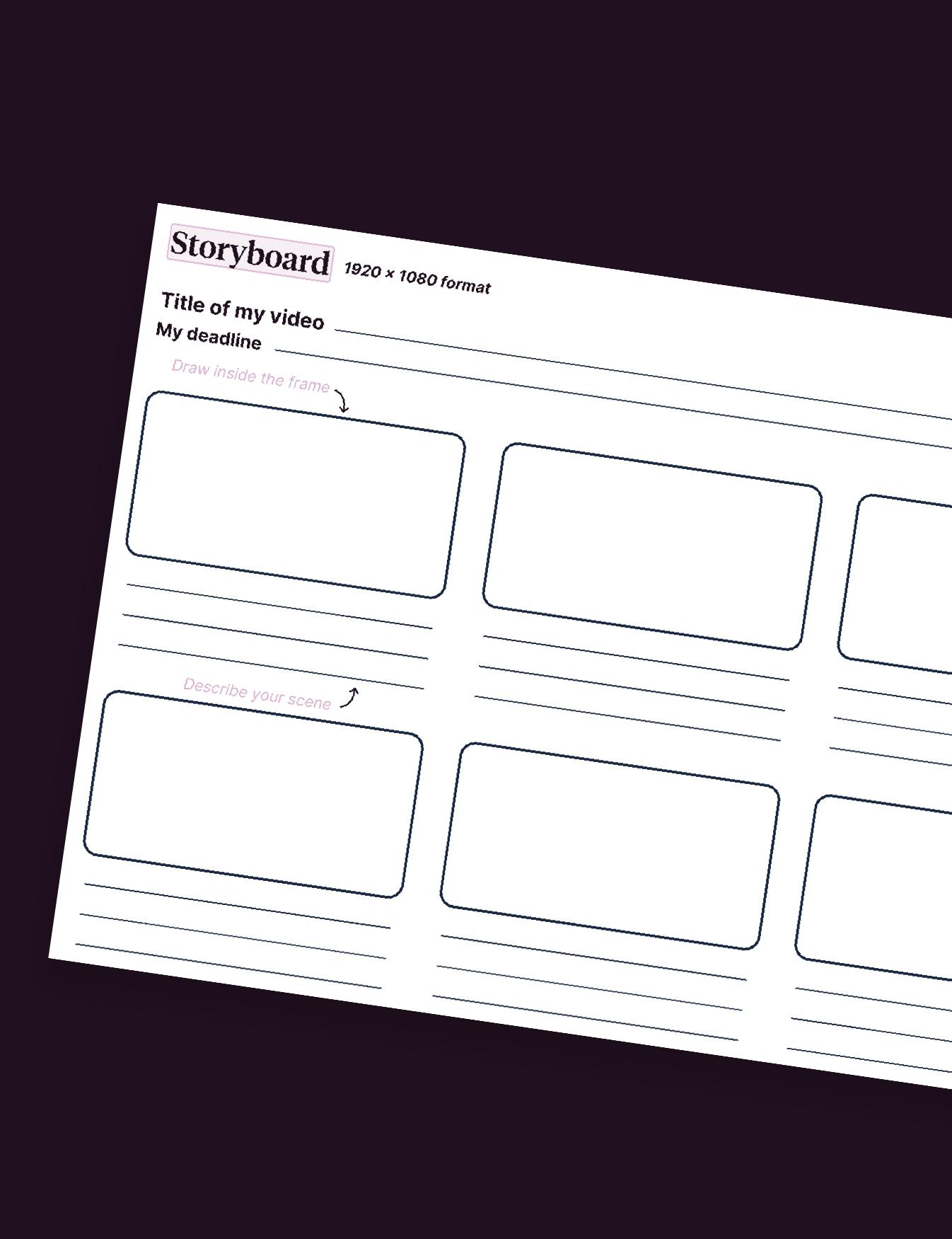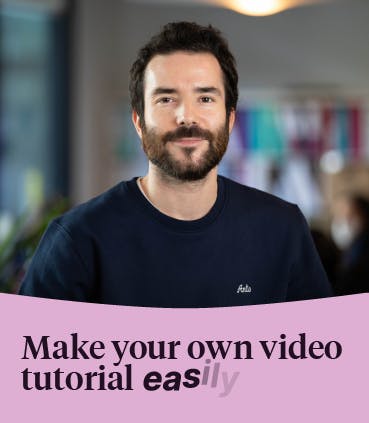How To Make A Good Video Tutorial

Do you want to make a great video tutorial for your teams and employees? Here, we give you some tips to give them the best training experience.
Do you need to learn something about your favorite subject? Then, chances are that you turn to video to do so. Indeed, 83% of people prefer watching video to access instructional content. Also, with the COVID-19 pandemic, companies relied more and more on video to train their employees because of the induced geographic and physical distance.
These facts explain the increasing success of video tutorials, either for private and professional purposes. However, though video is more and more popular for learning purpose, you may have some blockages to make your own instructional videos, especially if you don’t have a creative or graphic background. This article will explain the steps you should take to create your own video tutorial.
What is a video tutorial?
A video tutorial is an example of go-to instructional method for teaching a process through animated videos. It also gives step-by-step instructions to the audience to use a product or a service. The video tutorial aims at helping the user to complete a task successfully. This type of video is especially perfect for training videos and webinars.
Why are video tutorials so popular?
Video tutorials have been increasingly popular since the last ten years for training purposes on several grounds:
- Users rely three times more on video tutorial to learn about a product rather than reading the manufacturer’s instructions in a text
- Two over three employees execute their tasks better when they are given instructions visually and they absorb information 7% faster
- More than 70% of YouTube viewers turn to video tutorial when they want to solve a specific problem
- Video training encourages interaction and the learners can view the training when they want, at their own pace.
For all these reasons, video tutorials have become essential to marketers to give their audience what they want. Therefore, video marketing has aligned with other service providers’ practices to help marketers to reach their goals.
3 common mistakes marketers make when creating video tutorial

When creating videos, marketers are likely to make the three following mistakes.
Mistake #1: Having unclear goals
When you have unclear goals, especially concerning your audience, it is impossible to create useful content. You must have a clear idea of who you help to make the best decisions about your video.
Mistake #2: Being a perfectionist
While making your video tutorial, you may worry about not being able to create perfect videos, especially if you’re not used to carry out this kind of task. However, you should be aware that perfection is not of this world. You must focus on the content of your video and on what your audience will learn from you instead.
Mistake #3: Worrying about the perfect equipment
Do you believe that you need fancy equipment to make your video tutorial? Then, you are wrong. Having the most expensive tools is not necessary. All you need is a software enabling screen capture and video editing. You have several tools available on the market for this, such as Pitchy. If you want, you may upgrade your equipment later. However, if you are beginner in creating video tutorial, learn the basics with a user-friendly software where you will learn to execute your videos quickly.
7 steps to create your video tutorial
As discussed earlier, creating video tutorials should not be a burden for anyone. You don’t need to be experienced in graphic design or video making. You will just have to follow the following steps. We guarantee you that you will present eye-catching tutorial video to your viewers.
Step #1: Determine the main goal of the tutorial
You must have a clear-cut vision of the main objective of your tutorial in the first place.
Are you onboarding new staff? Then, you should collect the questions they might ask and provide them with the information they need to succeed in your company.
Do you introduce a product or service? Ask your customers how they use your products or services and where are the areas where they struggle the most. Your tutorial will help you to answer their concerns.
Do you present the new features of a product? Then, you must think about how your viewers’ life will be simplified and adjust your tutorial accordingly.
Are you training your staff? In that case, you must ask yourself what kind of knowledge or skills they might find useful in their ongoing career. You can also give them access to other types of content, so that they can deepen their knowledge.
In any case, you must always ask yourself the following question when you determine the main goal of your video tutorial:
- What is the topic of your tutorial?
- Who is your audience?
- Why do your viewers care about the topic of your tutorial?
- What is the learning goal of your video tutorial?
- What is the main benefit that you expect your audience to take away from your video tutorial?
Step #2: Create a storyboard and a script, search the inspiration
Once you have determined the main goal of your tutorial, create a storyboard to visualize your ideas with images. This will help you to present interesting content to your audience, and to modify your ideas if need be. You don’t need to be an artist to create your storyboard. You may use tools like Canva to draw what you will display on the screen.
After you have finished your storyboard, it is time to write the script of your video. This task will help you to save time and to match your narration with the action happening on the screen. You may use a simple template to write your script in less than an hour.
Step #3: Record your narration with an understandable voice
Once your have written your script, you will record the narration of your video. While you are doing so, use a human-like voiceover, as viewers are not receptive to robot-line voices. That’s why you should be well-equipped by using an external microphone, so that you will make the most of the audio quality of your video. Also, make sure that you record your video in a quiet place and that you speak clearly and slowly.
Step #4: Record your video with your screencasts
After recording the narration, the next step is to translate your narration with animations. Depending on the topic of your tutorial, you might need to capture a recording of the process that happens on the screen, perform live demonstrations, or both.
Here are some useful tips to use while recording your video:
- Find an attractive and well-lit place to record your video
- Insert chapiters and titles in the video, so that your viewers will be able to follow
- through your tutorial easily
- Insert subtitles to make your viewers follow your video without the sound
- Don’t hesitate to insert quizzes at the end of each chapter to check the retention rate of the learners (this applies mainly for learning videos).
Step #5: Edit your video
Editing your video enables you to control its narration and content. During this step, you can add your audio narration to the timeline. You can also use clip speed and extend frame to put your audio and video in sync. Also, adding an intro and music during the editing stage will enable you to personalize your video and to make it more attractive to your viewers.
Step #6: Share your video
Once you have edited your video, you can post it on your platforms such as your YouTube channel to reach a wide audience. However, before sharing your tutorial with the world, you may show your video to a few people to test your tutorial concept on them. Their reaction will help you to determine if your content is helpful for your viewers.
Step #7: Track the engagement of your audience, like a webinar
Your first video tutorial might not attract the number of viewers you want at the beginning. For this reason, you will have to pay attention to your video’s analytics to see what you can improve. Some KPIs you will track include the number of views, the quiz results, the average viewing time, or the satisfaction rate of the learners. It is also useful to check the comments on your YouTube channel to receive some feedback.
Contact Pitchy to make your video tutorials with a simple tool
Are you looking for a software which will allow you to create your video tutorials with animation, effortlessly? In that case, Pitchy is the solution you need, the perfect tool where you can integrate your animation, screencasts, images, voice and title. We offer you a large spectrum of features that will help you to create your video tutorials by yourself very quickly. No downside;) If you are interested, feel free to watch our upcoming webinar or ask for a demo.
Resources


